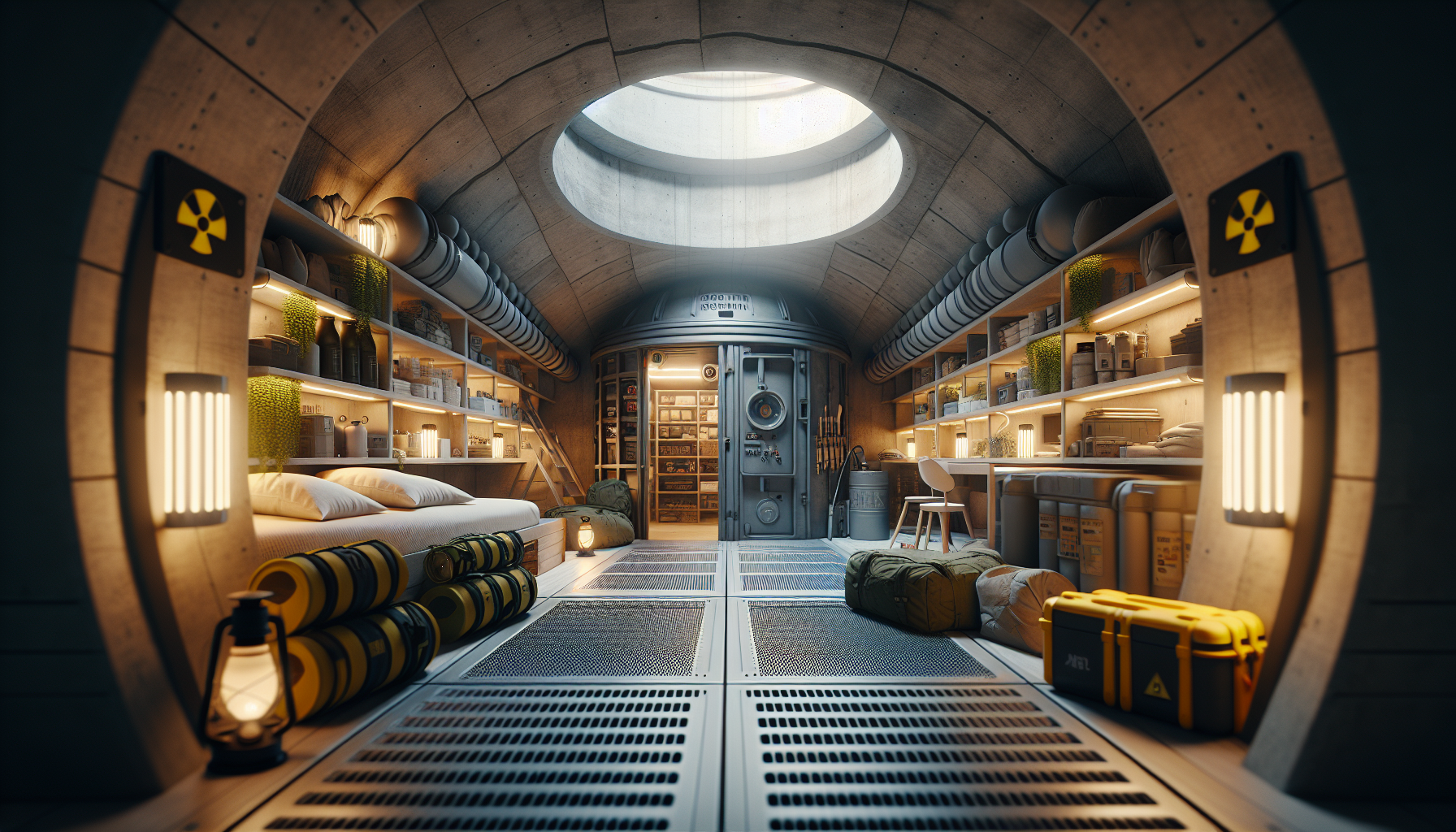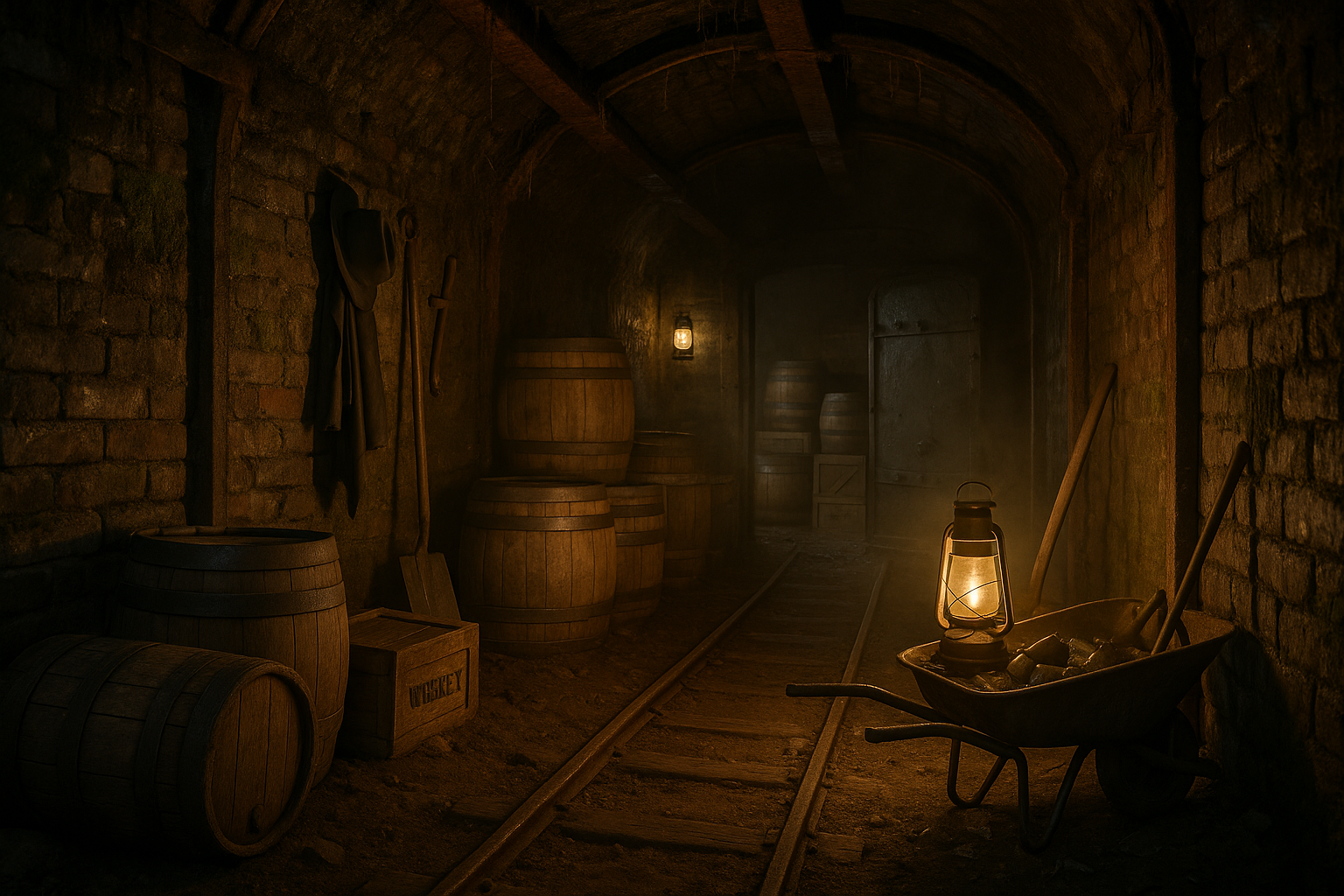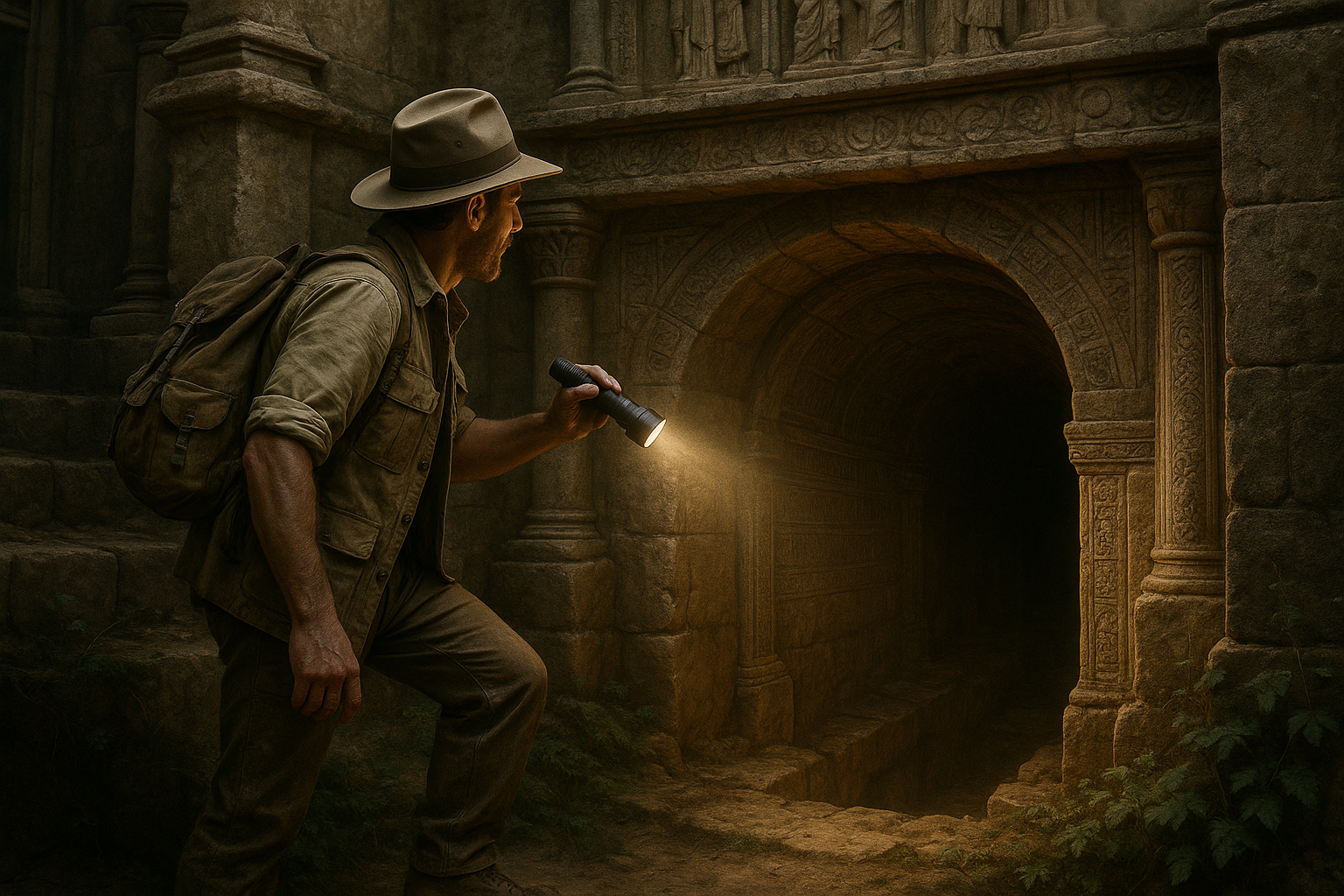In a world where geopolitical tensions often simmer beneath the surface, the question of personal safety in the event of a nuclear incident becomes increasingly relevant. Whether it’s the saber-rattling of powerful nations or the unpredictable nature of rogue states, the possibility of a nuclear threat, while remote, is a scenario that many feel compelled to prepare for. Enter the concept of the nuclear-resistant shelter—a blend of cutting-edge engineering, strategic planning, and a touch of modern ingenuity. This guide, “Bunker Up: The Ultimate Guide to Building Nuclear-Resistant Shelters for Maximum Protection,” is crafted to walk you through the essentials of constructing a sanctuary capable of withstanding the unthinkable. As we embark on this journey, we aim to equip you not only with the knowledge to build a shelter but also with the peace of mind that comes from being prepared for any eventuality.
Our exploration begins by understanding the fundamental principles behind nuclear-resistant shelters. What makes a structure truly impervious to the forces unleashed by a nuclear blast? We’ll delve into the science of blast waves, radiation shielding, and the critical importance of airtight seals. You’ll discover the materials best suited for such formidable construction, from reinforced concrete to lead-lined walls, and learn about innovative design elements that maximize both space and safety. Additionally, we’ll cover the significance of location—how the surrounding terrain, soil composition, and proximity to potential targets can influence your shelter’s effectiveness. By the end of this section, you’ll have a comprehensive understanding of the core components that constitute a nuclear-resistant haven.
But constructing a shelter is just the beginning. Our guide also takes you beyond the basics, exploring the logistics of living comfortably and sustainably within a confined space for extended periods. We’ll discuss strategies for ensuring adequate ventilation, water purification, and food storage, as well as the psychological aspects of sheltering in place. Maintaining communication with the outside world, harnessing alternative energy sources, and ensuring medical preparedness are all crucial aspects we’ll address. By anticipating these needs and planning accordingly, you can transform your shelter from a mere protective bunker into a functional home, capable of sustaining life until it’s safe to emerge. So, buckle up and prepare to dive deep into the world of nuclear-resistant shelters, where preparation meets innovation, and peace of mind is the ultimate goal. 🛡️
Understanding the Need for Nuclear-Resistant Shelters
The threat of nuclear warfare, while a daunting subject, is a reality that nations and individuals must consider in today’s world. The construction of nuclear-resistant shelters, often referred to as bunkers, provides a vital solution for maximum protection against such threats. The demand for these shelters has surged due to increasing geopolitical tensions and the proliferation of nuclear weapons. Understanding the nuances of building a bunker that can withstand nuclear attacks involves diving into aspects of structural integrity, radiation shielding, and long-term sustainability.
The primary purpose of a nuclear-resistant shelter is to offer protection from the immediate blast, heat, and radiation following a nuclear explosion. The level of protection required depends on several factors, including proximity to potential targets, the scale of anticipated threats, and available resources. It’s crucial to assess these variables comprehensively to build an effective shelter. Potential threats are not limited to military confrontations; they also include accidents at nuclear power plants or potential terrorist attacks involving nuclear materials.
Designing a shelter involves strategic planning that accounts for both immediate and long-term survivability. The shelter must not only withstand the initial blast wave but also provide a safe haven against the subsequent fallout, which may last for weeks or even months. This requires a keen understanding of materials that can effectively block radiation, such as lead, concrete, and earth, as well as systems to ensure air and water purification, food storage, and waste management. The integration of these elements into the design of a bunker is crucial for ensuring the safety and well-being of its occupants.
The Science Behind Bunker Construction
Building a nuclear-resistant shelter involves sophisticated engineering and design principles tailored to resist various nuclear threats. One of the most critical aspects of bunker construction is its structural integrity, designed to withstand the pressure of a blast wave. Reinforced concrete is often the material of choice due to its strength and durability. Additionally, the shape and orientation of the bunker play significant roles in minimizing damage from shockwaves. For instance, structures with rounded edges and buried configurations tend to disperse the force more efficiently.
Radiation shielding is another pivotal component. The effectiveness of a shelter in protecting against radiation is measured by its protection factor (PF), which indicates how much it can reduce radiation exposure. Lead and earth are traditional materials for radiation shielding, but modern designs may incorporate advanced materials like polyethylene or boron-loaded polyethylene, which are highly effective in blocking neutron radiation. Ensuring that every entry point, such as doors and air vents, is adequately sealed is crucial to maintain the integrity of the radiation shield.
Long-term sustainability within the shelter is ensured by systems that support human life for extended periods. This includes air filtration systems capable of removing radioactive particles, water purification units, and methods for growing or storing food. Renewable energy sources, such as solar panels or wind turbines, can be integrated into the design to provide power without relying on external grids. Sanitation and waste management systems are equally important to prevent disease and ensure the comfort of occupants over prolonged stays.
Key Components of a Nuclear-Resistant Shelter
Creating a functional and effective nuclear-resistant shelter requires meticulous attention to several key components. Each component plays a critical role in ensuring the shelter’s efficacy and the safety of its occupants. Below, we discuss some of the most important elements to consider when designing and constructing a bunker.
Structural Design: The structural design of a bunker is paramount to its ability to withstand a nuclear blast. Typically, bunkers are built underground or in reinforced structures that absorb and deflect the force of a blast wave. The shape, materials, and construction techniques all contribute to the shelter’s resilience. It’s essential to consult with structural engineers who specialize in nuclear-resistant design to ensure that the shelter meets the necessary standards.
Radiation Shielding: Effective radiation shielding is crucial for any nuclear-resistant shelter. This involves selecting materials with high-density properties to block ionizing radiation. As mentioned earlier, lead, concrete, and earth are commonly used materials, but modern innovations have introduced new options that may offer superior protection. It’s important to calculate the required thickness of shielding based on the expected level of radiation and the duration of exposure.
Life Support Systems: Life support systems are integral to the long-term habitability of a shelter. This includes air filtration systems that remove radioactive particles and maintain a breathable environment. Water purification systems are also essential, as access to clean water is a necessity for survival. Food storage and production systems, such as hydroponics or freeze-dried meals, provide sustenance during extended stays. Additionally, power generation systems, including generators or renewable energy sources, ensure that the shelter remains operational.
Comparative Analysis of Building Materials
When constructing a nuclear-resistant shelter, choosing the right building materials is critical. Different materials offer varying levels of protection, durability, and cost. The table below provides a comparative analysis of some common materials used in bunker construction:
| Material | Radiation Shielding | Durability | Cost |
|---|---|---|---|
| Lead | High | Medium | High |
| Concrete | Moderate | High | Moderate |
| Earth | Moderate to High | High | Low |
| Boron-Loaded Polyethylene | High (Neutron Radiation) | High | High |
As seen in the table, each material has its advantages and drawbacks. Lead provides excellent radiation shielding but can be costly and requires careful handling due to its toxicity. Concrete offers a balanced combination of durability and cost-effectiveness, making it a popular choice. Earth, while cost-effective and durable, may require additional materials to provide adequate shielding against all types of radiation. Boron-loaded polyethylene is highly effective against neutron radiation but can be expensive.
Designing for Comfort and Safety
While the primary function of a nuclear-resistant shelter is protection, ensuring the comfort and psychological well-being of its occupants is equally important. The design should incorporate elements that create a livable environment, even in potentially high-stress situations. Here are some considerations for designing a comfortable and safe bunker:
Space Planning: Efficient space planning is essential in a confined environment like a bunker. The layout should maximize the use of available space while providing areas for sleeping, eating, and recreation. Modular furniture and storage solutions can help optimize space and maintain an organized living environment. It’s also important to include areas for medical treatment and isolation, in case of illness or contamination.
Lighting and Ventilation: Proper lighting and ventilation are crucial for maintaining a comfortable environment. LED lighting can provide efficient and long-lasting illumination, while natural light tubes can bring daylight into underground spaces. Ventilation systems must ensure a continuous supply of fresh air while filtering out contaminants. Adjustable vents and fans can help regulate temperature and humidity, enhancing comfort.
Psychological Well-being: The psychological aspect of living in a confined space cannot be overlooked. Designing the interior with calming colors, natural elements, and personal touches can improve mood and reduce stress. Entertainment options, such as books, games, or digital media, are important for mental health. Regular communication with the outside world, when possible, can also alleviate feelings of isolation.
Practical Steps for Building Your Own Shelter
Building a nuclear-resistant shelter is a significant undertaking that requires careful planning and execution. Here are some practical steps to consider when embarking on this project:
- Assess Your Needs: Consider factors such as family size, location, and potential threats to determine the size and specifications of your shelter.
- Choose a Suitable Location: Ideally, the shelter should be located underground or within a reinforced structure, away from potential blast zones and with access to natural resources.
- Consult with Experts: Engage structural engineers, architects, and safety experts to ensure your design meets all safety and regulatory standards.
- Source Quality Materials: Select materials that offer the best balance of protection, durability, and cost for your specific needs.
- Plan for Sustainability: Integrate systems for air, water, and food to ensure long-term survivability.
- Conduct Regular Drills: Familiarize all occupants with the shelter’s layout and emergency procedures to ensure readiness in the event of an actual threat.
By following these steps and ensuring thorough planning, you can build a shelter that provides robust protection and comfort. For more insights into the construction of nuclear-resistant shelters, watch the following video: How to Build a Fallout Shelter – The Practical Engineer. This resource offers practical advice and visual guidance on key aspects of bunker construction. 🎥

Conclusion
In conclusion, the comprehensive exploration presented in “Bunker Up: The Ultimate Guide to Building Nuclear-Resistant Shelters for Maximum Protection” serves as a critical resource for anyone seeking to understand the intricate details and importance of constructing nuclear-resistant shelters. Throughout this article, we’ve delved into the essential aspects of bunker construction, from the initial planning stages to the final touches that ensure maximum safety and comfort.
To begin, we emphasized the significance of selecting the appropriate location for your shelter. The location is not just about convenience but is pivotal for ensuring structural stability and accessibility in times of crisis. Whether you choose a rural area away from potential targets or an urban setting with reinforced basements, understanding your geographical context is crucial.
Next, we explored the architectural and engineering principles that underpin bunker construction. This involves not only choosing the right materials, such as reinforced concrete and steel, but also understanding the physics behind blast resistance and radiation shielding. The structural design must be robust enough to withstand external pressures while maintaining an airtight environment to protect against radiation infiltration.
Ventilation and air filtration systems were highlighted as critical components of a nuclear-resistant shelter. These systems ensure that the air inside remains breathable and free from radioactive particles. We discussed various types of filters and the importance of maintaining these systems regularly to ensure they function optimally when needed.
Water and food storage were other essential topics covered. We provided guidance on calculating the necessary supplies based on the number of occupants and the duration you may need to remain sheltered. Effective storage solutions and methods for purifying water were discussed, ensuring that your survival needs are met without compromise.
Furthermore, we tackled the psychological aspects of prolonged sheltering. Isolation and confinement can take a toll on mental health, so designing your bunker with spaces that promote well-being, such as recreational areas or natural light sources, can make a significant difference. We also stressed the importance of having a communication plan to stay informed and connected with the outside world.
Security measures were not overlooked, as they are vital in ensuring that your shelter remains a safe haven. From surveillance systems to reinforced entry points, every detail matters when it comes to protecting against potential intruders or natural threats.
As we draw our discussion to a close, it’s imperative to recognize the importance of being prepared. In an unpredictable world, having a nuclear-resistant shelter is not just about surviving a potential catastrophe, but also about providing peace of mind for you and your loved ones. The knowledge and strategies shared in this guide empower you to take proactive steps in safeguarding your future.
We encourage you to engage with this content by reflecting on your current preparedness plans and considering how you might apply what you’ve learned. Perhaps this article has inspired you to start your own shelter project, or maybe it has sparked a discussion among your family and friends about emergency preparedness. Sharing this guide with others can help spread awareness and inspire more people to consider the importance of having a nuclear-resistant shelter.
Moreover, we invite you to leave your comments and thoughts below. Your feedback is invaluable, and by sharing your perspectives, you contribute to a broader conversation on this critical topic. If you have any personal experiences or additional tips, we would love to hear them.
In the spirit of continuous learning and improvement, we also recommend exploring further resources to expand your understanding. Websites such as the Federal Emergency Management Agency (FEMA) and the World Health Organization (WHO) WHO.int offer valuable insights into disaster preparedness and public safety measures.
In closing, remember that while we cannot predict the future, we can certainly prepare for it. Let this guide be a stepping stone towards a safer and more resilient future. Stay informed, stay prepared, and most importantly, stay safe. 🚀🔒
Thank you for taking the time to read “Bunker Up: The Ultimate Guide to Building Nuclear-Resistant Shelters for Maximum Protection.” We hope this guide has been both informative and inspiring, and we look forward to hearing from you soon.
Toni Santos is a visual storyteller and artisan whose work explores the quiet power of what lies beneath. With a deep fascination for subterranean and hidden architecture, Toni uncovers the layers, voids, and forgotten spaces that shape our built environment from the shadows.
His art is a journey through the unseen — from ancient underground chambers to sealed passageways, service tunnels, and foundations buried in time. Each creation tells a story of silence, secrecy, and structure — revealing how absence and concealment can be just as meaningful as what’s visible above ground.
Whether working through visual compositions, architectural studies, or symbolic handcrafted pieces, Toni captures the soul of hidden spaces. His work bridges art and archaeology, blending design with discovery. Trained in visual design and traditional techniques, Toni creates with intention. His pieces don’t just depict — they interpret, inviting viewers to rethink what space, memory, and architecture mean when they’re hidden from view.
As the creative force behind Vizevex, Toni shares this perspective through curated visual narratives, symbolic collections, and interpretive essays that give voice to the quiet geometries beneath our feet.
His work is a tribute to:
The mystery of spaces built to be forgotten
The symbolism embedded in foundations, voids, and passageways
The timeless connection between human intention and hidden structure
Whether you’re an artist, an urban explorer, or someone fascinated by the unseen frameworks that support our world, Toni invites you into a realm where architecture becomes myth — one corridor, one layer, one buried story at a time.





